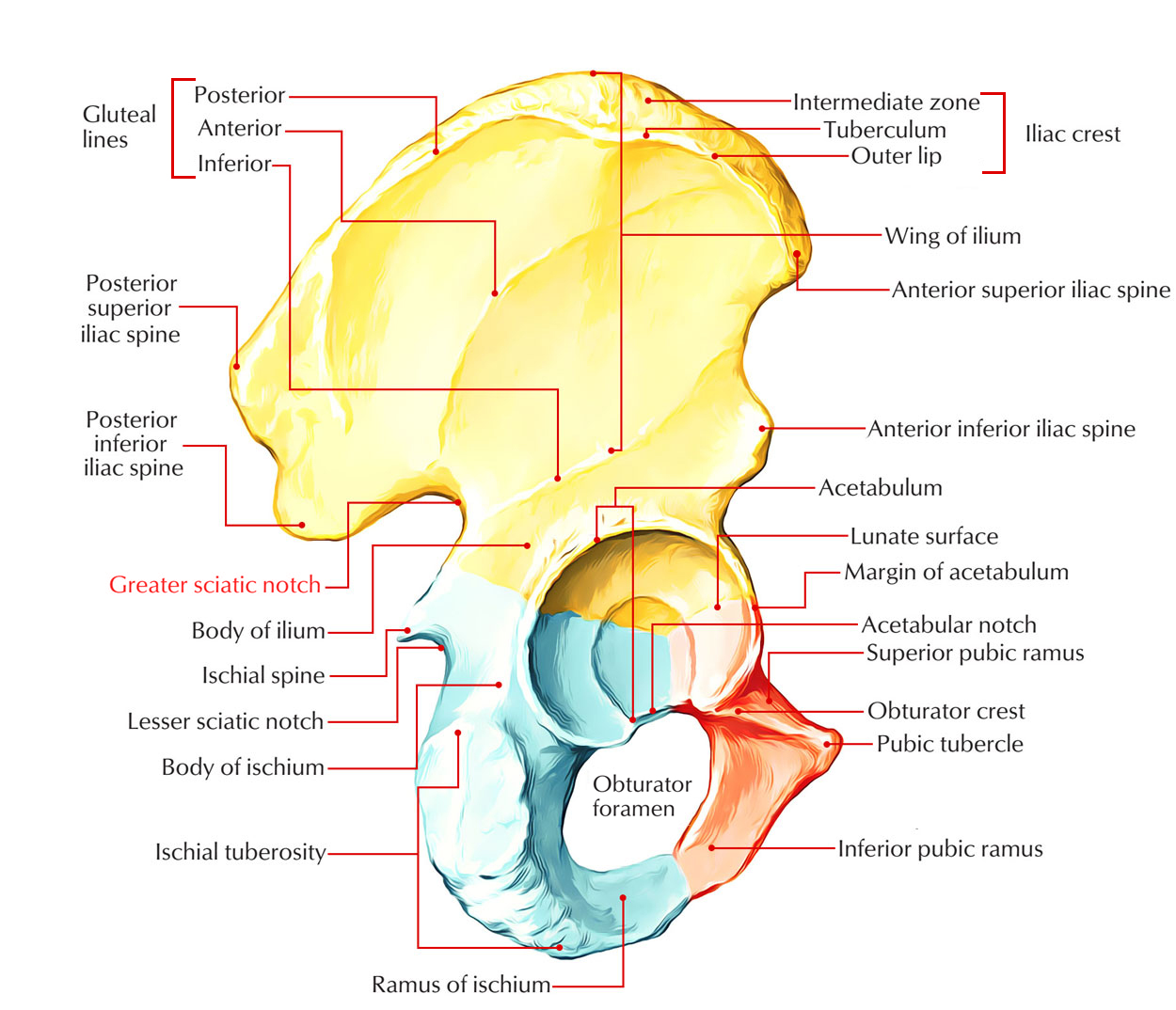The greater sciatic notch is located in the middle of the ischial spine, inferiorly and the posterior inferior iliac spine, superiorly. The sacrospinous ligament transforms the greater sciatic notch within the greater sciatic foramen, it attaches from the ischial spine towards the lateral part of the sacrum as well as coccyx. The greater sciatic notch is divided within a supra and infrapiriformis area by the piriformis muscle, normally represented as incisions between the pelvic muscle groups. The lesser sciatic foramen is confined by the sacrospinous ligaments superiorly and the sacrotuberous ligaments inferiorly.

Greater Sciatic Notch
The greater sciatic notch contains:
- The piriformis.
- The superior gluteal vein.
- The superior gluteal artery.
- The superior gluteal nerve.
- The inferior gluteal vein.
- The inferior gluteal artery.
- The inferior gluteal nerve.
- The sciatic and posterior femoral cutaneous nerves.
- The internal pudendal artery.
- The internal pudendal veins.
- The nerves to the internal obturator and quadratus femoris muscles.
Clinical Significance
Hernias
- When there is a protuberance from the pelvis of a peritoneal sac from the greater sciatic notch, either superior or inferior towards the piriformis muscle, or via the lesser sciatic notch, the condition is called sciatic hernia.
- The suprapiriformis hernia is the most regular form. Above the piriformis the hernia sac departs the pelvis along the course of the superior gluteal artery as well as nerve.
- The infrapiriformis hernia sac follows a progression together with the inferior gluteal vessels, internal pudendal vessels, as well as sciatic nerve.
- Going medial towards the internal pudendal vessels and nerve along with the sciatic nerve, the subspinous hernia sac exits the pelvis via the lesser sciatic foramen.
- A perineal hernia is any form of hernia that exits under the sacrotuberous ligaments.
Sciatic Nerve Block
Indications
Sciatic nerve blockade is generally used to cure painful disorders of the lower leg like reflex sympathetic dystrophy and for reducing pain of lower extremity in order to assist physical therapy.
Techniques
Throughout the course of the sciatic nerve, a regional block of the sciatic nerve can be performed anywhere. Most techniques are developed primarily for trauma patients or elderly people in order to avoid arrangement problems.
At the sciatic notch the nerve can be blocked, at the level of:
- The ischial tuberosity.
- Greater trochanter.
- Superior part of the popliteal fossa.
Classic Approach
Using the piriformis muscle as a landmark, the nerve is blocked at the plane of the greater sciatic notch. The patient is placed in the lateral position with the side chosen to be blocked at the top, after informed consent is obtained.

 (60 votes, average: 4.84 out of 5)
(60 votes, average: 4.84 out of 5)